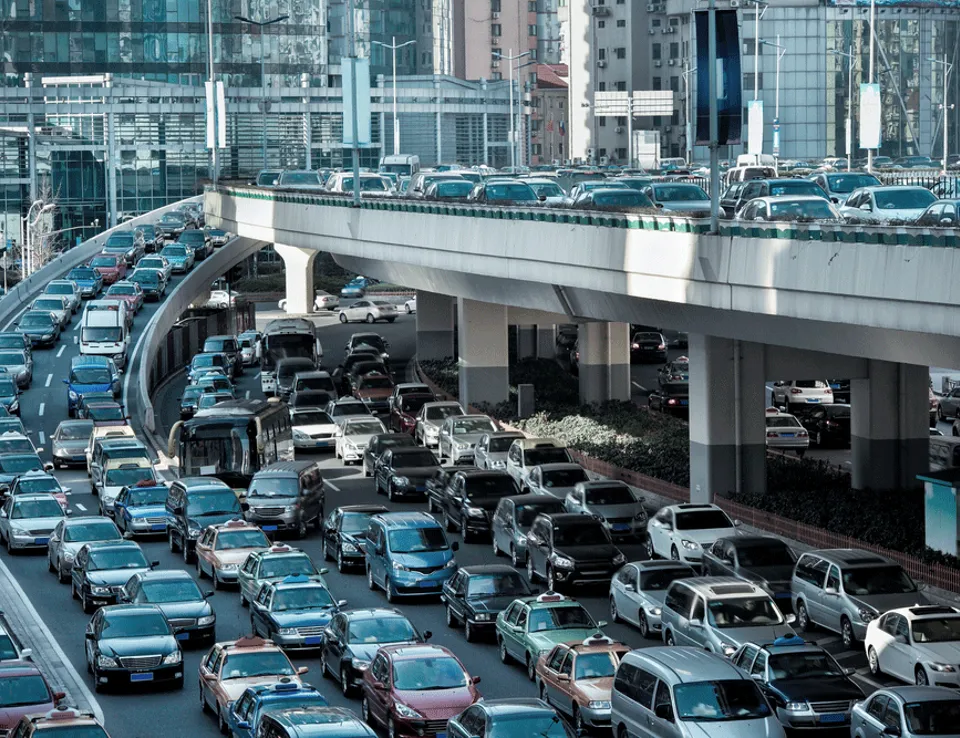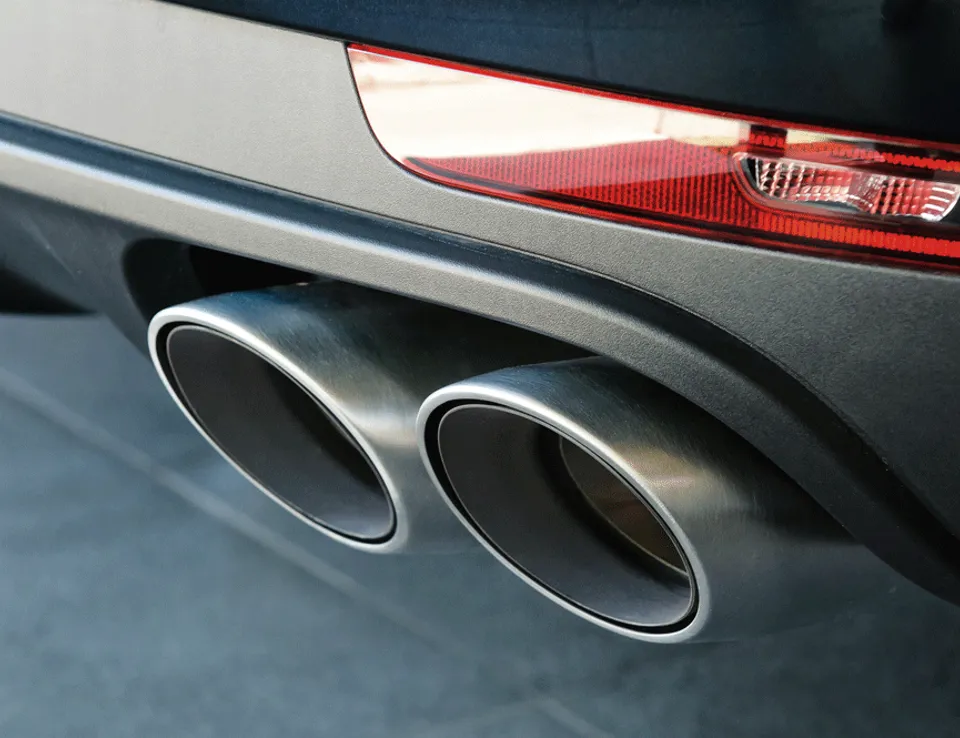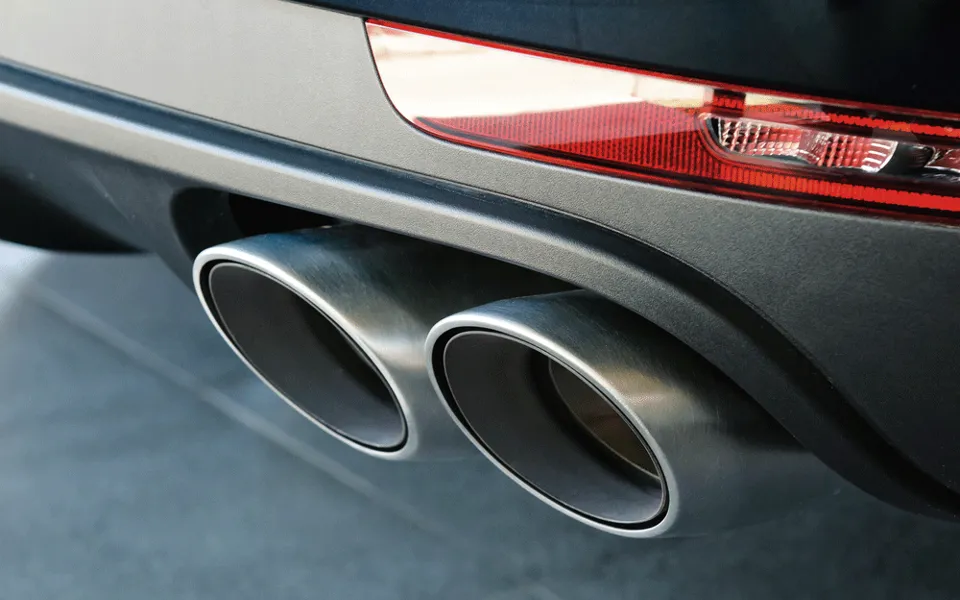
In the last blog, I mentioned that I would introduce the important issue of primary NO2 emissions … so here we go!
Primary NO2 is the component of total exhaust NOx (NO + NO2) that is emitted directly as NO2 by vehicles. Primary NO2 is distinct from the additional (secondary) NO2 that is formed in the atmosphere through the chemical reaction between directly emitted nitric oxide (NO) and ozone.
Over the past 15 years or so changes in diesel vehicle technologies have led to an increase in primary NO2 emissions. This in turn has had an important influence on the concentrations of roadside NO2 that we breath.
If we are to develop effective pollution mitigation policy, we need to understand the influence of primary NO2 on total ambient NO2 concentrations. Working out how much influence primary NO2 emissions has on ambient roadside NO2 concentrations is challenging because:
- Until recently it has been difficult to know how much primary NO2 is actually being emitted due to a lack of emission measurements … something that we are addressing through our work on real-world driving emissions
- It is hard to understand the detailed real-world dispersion processes that emissions undergo before they result in the ambient concentrations that we are exposed to.
Quantifying primary NO2
One of most difficult issues to understand is just how much of the measured ambient NO2 concentration at a roadside can be attributed to direct primary NO2 emissions from vehicles and how much is due to the secondary NO2 that is formed through chemical reactions in the atmosphere. As various sources produce NO2, all of which vary considerably in space and time, and chemical processes interconvert NO and NO2, this makes for a tricky issue.
Fortunately, there is an easy way to show how important primary NO2 emissions are without resorting to complex atmospheric chemistry modelling. At Marylebone Road in London the concentration of NOx has varied very little over the past 11 years as shown below. In fact, the concentration of NOx in 2016 was essentially the same as in 2005. That is in itself an astonishing, if slightly depressing, trend.
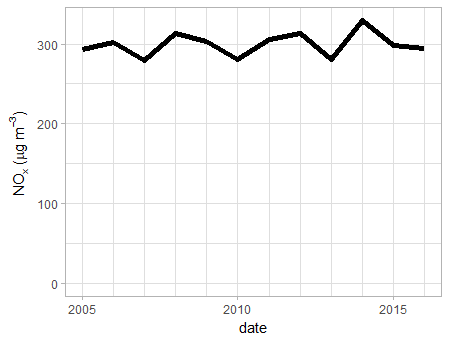
Interestingly, even though NOx has been stable over this period, the annual mean concentration of NO2 has changed a lot in that time. It has decreased from 112 µg m-3 in 2005 to 87 µg m-3 in 2016 (a 22% reduction). In other words, there has been 22% reduction in annual mean NO2 without changing the overall concentration of NOx.
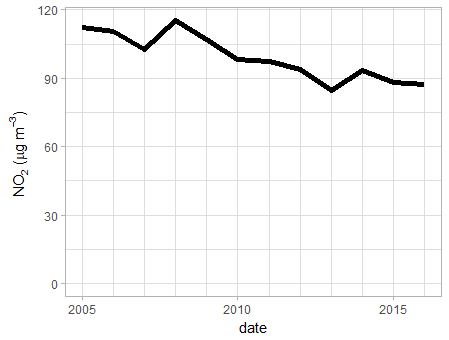
But what about exceedances of the hourly limit value (200 µg m-3 not to be exceeded more than 18 times a year)?
The plot below demonstrates huge changes in the number of exceedance hours. Over the past 11 years the number of exceedance hours decreased from 853 in 2005 to 67 in 2016. That’s a reduction of 92%! How can there be such a massive improvement in NO2 without changing the concentration of NOx – mitigation magic or mitigation on steroids?
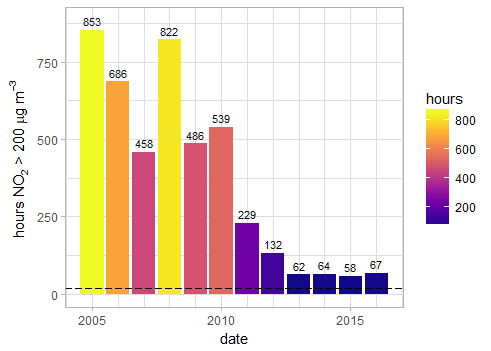
What has driven these changes in roadside ambient NO2 concentrations? The answer lies almost entirely with changes in primary NO2 emissions from vehicles. At Marylebone Road, primary NO2 emissions have decreased from around an average of 23% of NOx to about 12% of the NOx over the period 2005 to 2016, despite apparently no change in NOx emissions from traffic over the same period.
Additionally, because of the nature of NO2 pollution, the changes have a much stronger influence on the highest short-term NO2 concentrations. This is perhaps an important characteristic from the perspective of human exposure and health.
So is Marylebone Road a particularly extreme example due to its location in central London on a particularly busy road with high NOx concentrations? Well, it is important to note that these influences are present everywhere, albeit to a greater or lesser extent. And as I have pointed out, these things are tricky to quantify.
The role of real world driving testing
To understand the ‘NO2 problem’ and know how best to tackle it, we must understand the underlying and constantly changing complexities associated with emissions. This is where remote sensing of real-world driving emissions come to the fore.
Exceedance of NO2 limits across Europe is largely dominated by locations close to roads. Road vehicle emissions are the primary cause, and the impact of the emissions are determined by the different mix of fuels and vehicle technologies (engine and abatement) that produce varying levels of primary NO2 and total NOx emissions.
With remote monitoring it is possible to make measurements and then analyse the impact of a myriad of vehicle technologies, fuels, driving conditions and numerous other factors for thousands of vehicles under real-world conditions. This is especially important at a time when there are large changes to vehicle technologies and an absence of comprehensive data on NO2 emissions.
Vehicle characteristics, such as the technologies used on buses and taxis, or the age profile of vehicles, can vary considerably between and within urban areas. To understand the contributions made to near-road NO2 concentrations, and those further afield, robust quantification of local fleet emissions is needed. It is this information that remote sensing of real-world driving emissions provides, offering a robust way of quantifying the emissions complexity and informing and evaluating the most promising mitigation scenarios.
By coupling real-world emission data with air quality modelling to better understand the balance between overall NOx emission reductions and changes to the primary NO2 component, a much clearer understanding of the effectiveness of measures to tackle NO2 pollution can be achieved.
In our next blog, we hope to provide an update on our most recent measurements and take a closer look at the ambient trends in NOx and NO2 concentrations in the UK and the rest of Europe.
For more details on Ricardo’s remote sensing vehicle emission measurement service and how it can be used to provide robust information that supports the development of air pollution mitigation strategies contact David Carslaw.





 Follow Ricardo plc for regular updates
Follow Ricardo plc for regular updates



